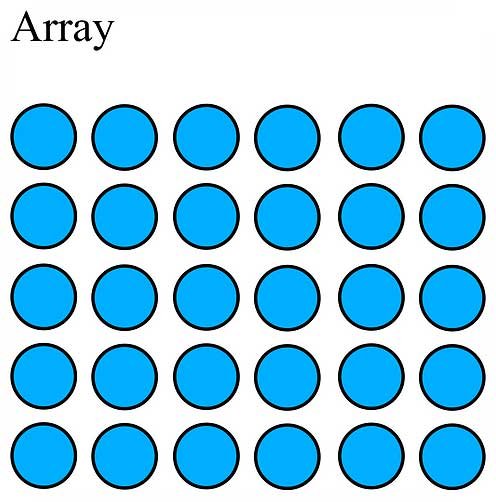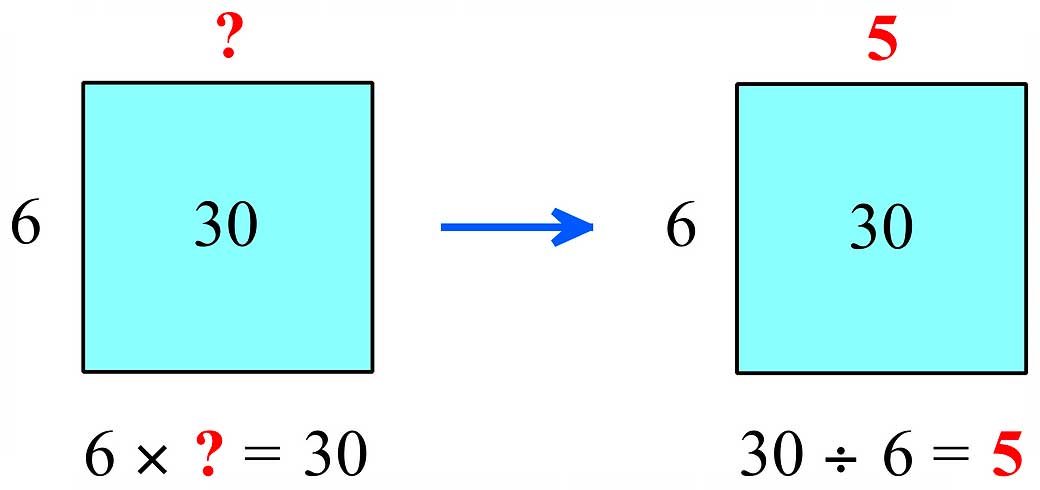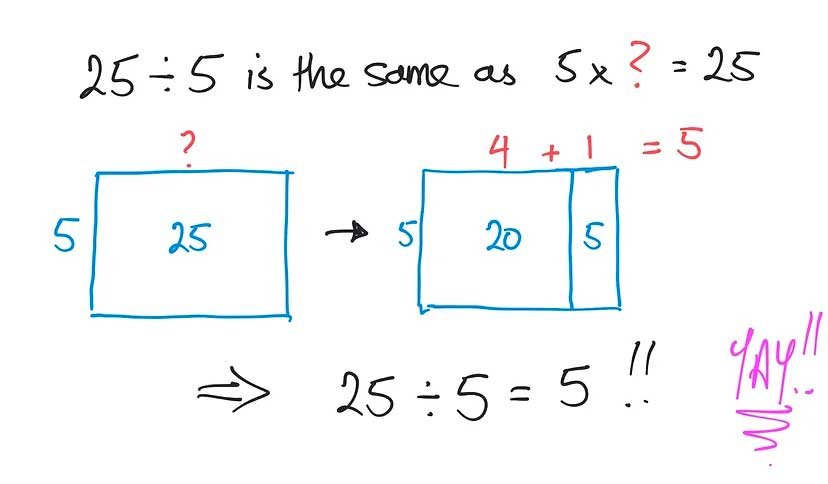H'Array for Multiplication and Division
TLDR; I'm going to show you how to link open array division to the short division algorithm and make it make sense to students!
Throughout my conceptual mathematics learning journey, I have experienced numerous 'aha' moments. The versatility of the array was one of these. It can be used for fractions, measurement, algebra, and of course multiplication and division. Even within these topics, the 'aha' moments with arrays keep coming, and this story is about one of those moments.
Most of us are already familiar with the rectangular array and its benefits, particularly in teaching multiplication. It moves the understanding of multiplication from the additive 'joining sets' model to the multiplicative 'replication model'. Another reason why the array is so effective is that it demonstrates the commutative and distributive properties much more clearly than both 'groups' and 'number lines'. We can show, this is using the three different models for 6 x 5:
With the first two models, we would need to redraw them to show commutativity and the distributive property, but with arrays, we can demonstrate both, without having to recreate the array at all.
The other great thing about arrays is that not only does it display multiplication beautifully, but it also shows division and highlights its inverse property to multiplication very clearly.
The other great thing about arrays is that not only does it display multiplication beautifully, but it also shows division and highlights its inverse property to multiplication very clearly.
Using open arrays, we can play around with the two operations and even connect them to the standard algorithm for consolidation of the vertical multiplication and short division methods. Here's how:
Let us begin with 2-digit multiplication. I'm going to use 16 x 25.
We can immediately see how using the distributive property can link directly to the standard algorithm. Better still, it clearly displays how each 2-digit number is partitioned into its standard place value parts when simplifying, rather than using the language of 'carrying' or 'borrowing' which holds very little conceptual understanding for students and can create life-long misconceptions.
But what about division? This is where I tend to get most of the questions.
Connecting the array to short division requires some preparation that rarely gets done. This preparation involves using the open array for division, and really connecting the idea of division being the inverse of multiplication. Begin by giving them simple arrays that require them to make connections between multiplication and division:
Then you can move them into more complex ones that require the use of the distributive property.
Now before you nope out of here, the abstract process may look complicated, but remember, this is not a necessary step initially, and it certainly doesn't have to be set out this way. The main idea is to get students to visualise the division as an inverse of multiplication. That way, if they get stuck, they will have the tools to troubleshoot their way through the solution.
Finally, as promised, the link to the short division. In the wise words of George Polya, "Always start with a simpler problem". So we're going to begin with 25 divided by 5. Here goes:
But how do we use this to teach short division? Like this:
This method allows for the conceptual connection to be made to the standard algorithm without the need for the "Guzzinta!" idea. It provides all the same methods but without the need to remember the process alone, because really, in a problem like 25 divided by 5, if the student doesn't already know the answer, they will need to fall back on their additive thinking of counting by 5. Finally, just like multiplication, this method involves the explicit use of standard place value which is super important for success (and efficiency) in all arithmetic operations.
And there you have it...Hip, Hip H'Array!!
If you loved this post and would like to know more, why not reach out and book a chat or just email me at nadia@emmaths.com.au. I'd love to hear from you!









